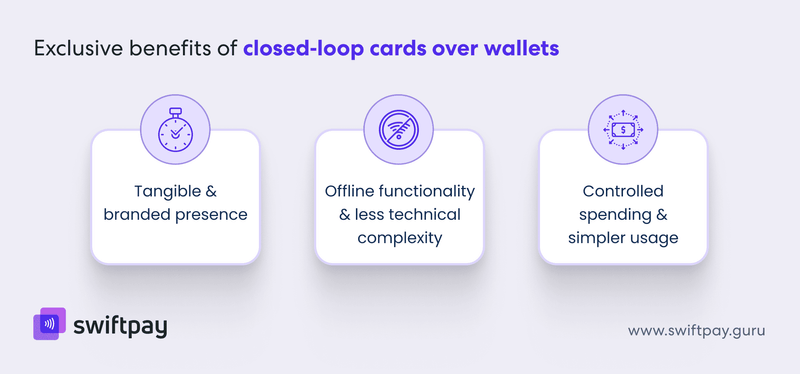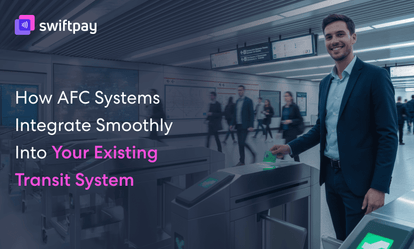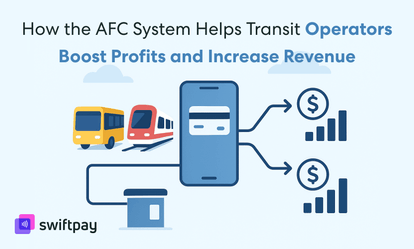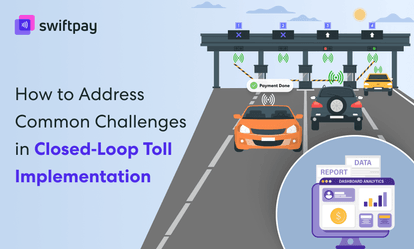Closed loop wallets and closed-loop cards may look similar on the surface, but they serve different goals, solve different problems, and fit different types of customer behavior.
If your business is focused on building customer loyalty, launching your own payment infrastructure, or trying to increase repeat visits, closed loop payments are a powerful means.
But you might have to choose between closed loop cards and wallets according to your business requirements.
That’s why it helps to know the difference between the two so that you can make an informed decision.
And that’s exactly what you’re going to find out in this blog. Not just that, but also what are their ideal use cases and the distinct advantages they hold over each other?
Let’s get into it.
What are closed-loop wallets?
Closed loop wallets (or e-wallets) are digital payment systems tied to a specific business or brand.
They're typically embedded within a mobile app or accessed through a customer portal, which makes them a mobile-first alternative to traditional payment methods.
These wallets store customer value, whether it’s funds, loyalty points, promotional credit, or purchase history. And they are usable only within the issuing brand’s ecosystem.
What makes them powerful is their versatility. Businesses like yours can preload offers, enable discounts automatically, or trigger instant rewards.
As these closed loop payment systems live inside an app, they can do more than just process payments. They become part of the customer experience.
The best examples of closed loop e wallets include Starbucks Rewards, Uber Cash, and the Amazon Pay balance.
These wallets allow customers to make payments. Besides, they’re also loyalty engines built directly into platforms customers already use.
Ideal use cases for closed-loop wallets
Closed-loop wallets work best for businesses where speed, convenience, and engagement matter most. Let’s see some closed-loop wallet examples:
- High-frequency, low-value transactions: Coffee shops, quick-service restaurants, or transit systems thrive on repeat purchases. And closed-loop e-wallet apps make repeat usage frictionless.
- App-driven businesses: If your customers are already engaging via a mobile app, like in food delivery, gaming, or e-commerce, then closed-loop wallets become a natural extension.
- Instant reward scenarios: Whether it's a discount for completing a ride or a free item after five purchases, wallet apps make real-time reward delivery seamless.
Read more: Top 5 Use Cases of Closed-Loop Payment Systems for Businesses
What are closed-loop cards?
Closed-loop cards are branded, reloadable cards issued by a business (or authority) for use exclusively within its own network.
They provide more control to the issuing party. This means you can set spending limits, expiration dates, or promotional bonuses.
These cards may be physical (like bank cards) or digital, depending on how your business operates.
Closed-loop cards bring a level of simplicity and tangibility that digital wallets don’t always offer. They’re easy to distribute, easy to understand, and easy to use.
The best examples of closed loop prepaid cards include retail store gift cards, smart transit cards, and supermarket loyalty cards.
Ideal use cases for cards
Closed-loop cards make sense in business environments where digital wallets might not be practical or difficult to use. Let’s see some closed-loop card examples:
- Gift-giving and prepaid use: Retail, hospitality, and entertainment venues often rely on branded cards to drive foot traffic and customer acquisition.
- Offline transactions: Brick-and-mortar stores, especially those without strong digital infrastructure, benefit from a solution that doesn’t rely on mobile phones and constant internet connectivity.
- Subscription models or memberships: Gyms, learning centers, and clubs can issue closed-loop prepaid cards to track access, spending, or time-limited benefits without building an app.
The difference between closed-loop wallets and closed-loop cards
| Feature / Use Case | Closed-Loop Wallets | Closed-Loop Cards |
|---|---|---|
| Customer interface | App, browser | Physical or digital card |
| Setup complexity | Requires app infrastructure | Can be standalone |
| Branding potential | Dynamic, in-app | Tangible, persistent |
| Ideal for | Mobile-first businesses | Offline-heavy businesses |
| Flexibility for campaigns | Very high | Moderate |
| User accessibility | Smartphone-dependent | Anyone, no app needed |
| Personalization/data depth | High | Medium |
Unique benefits of closed-loop wallets (that cards can’t match)
Closed-loop wallets shine when your goal is deep digital engagement.
These wallet apps don’t just facilitate closed loop transactions; they extend your brand’s reach into the customer’s pocket. Let’s explore some unique benefits:

Always-on, app-based access
Your customers already carry their phones. So, why not make that the point of access?
Closed-loop wallets don’t require a separate item to be remembered or carried. They’re easy to use, manage, and update. That means you can effortlessly set up your promotions and the payment experience you want your customers to have.
High-engagement & richer data
Because the closed-loop e-wallet lives inside an app, it’s a direct line to customer behavior. You can track purchase patterns, segment offers, and reward habits instantly.
Loyalty logic, gamification, and in-app receipts all flow through the same channel.
This makes app-based wallets ideal for brands that thrive on frequent interaction and personalized experiences, like malls, supermarkets, and fashion retailers.
Faster iteration and feature expansion
Closed-loop e-wallets give you speed, which means you can test a new campaign, reward structure, or payment rule with minimal lead time.
There’s no printing, shipping, or physical logistics.
For businesses where innovation cycles are short and experiments matter, closed-loop wallet apps are a more flexible infrastructure.
Unique benefits of closed-loop cards (that wallets can’t match)
Cards may not be new, but they’ve held up for a reason. Their value lies in their simplicity and reach, especially when you’re operating in physical environments or dealing with audiences who aren’t very tech-savvy.
That’s why closed-loop prepaid cards hold some distinct advantages. Let’s see:

Tangible & branded presence
A physical card is a physical brand impression. Whether it’s sitting in someone’s wallet, clipped to a badge, or handed out as a holiday gift, it’s a real-world connection to your business.
Branded cards are ideal for loyalty milestones, VIP tiers, or events where apps just don’t carry the same emotional weight.
Read more: Build Brand Loyalty with Closed-Loop Wallets
Offline functionality & less technical complexity
Not everyone is connected all the time. And not every location has the infrastructure for app-based engagement.
Closed-loop cards work well in fuel stations, parking lots, college campuses, and food courts—places where quick, straightforward payments make more sense than mobile features.
They also avoid the app adoption hurdle. There’s no download, no login, no onboarding friction.
Controlled spending & simpler usage
Cards offer more than just payment. They offer control.
Parents can preload cards for kids. Companies can issue cards with preset limits. Universities can hand them out as campus currency.
Not just on the end user but on the business side as well. So, for businesses that need strict usage parameters or centralized management, branded cards are simple to configure and easy to distribute.
When should a business choose closed-loop e-wallets?
If your business is built around digital touchpoints and rapid customer engagement, closed-loop wallets offer the most flexibility and return.
Here’s when they make the most sense:
- You already have (or are building) a mobile app that customers actively use.
- Your customer base is digitally fluent, and app usage is routine.
- You want to track behavior, have dynamic loyalty features, and send targeted offers.
- Your business involves repeat and high-frequency transactions.
- You want to launch limited-time campaigns or create exclusive, fast-moving offers.
When should a business choose closed-loop cards?
Closed loop card payment systems are your go-to if simplicity, tangibility, or reach are higher priorities for your business than real-time engagement.
Use them when:
- You want a branded, visible token that customers can keep and use.
- Your customers aren’t reliably mobile-first or smartphone-enabled.
- You operate primarily in offline environments (e.g., fuel stations, parking, food courts, etc).
- You need to offer controlled spending tools for employees, students, or gift recipients.
- You want your brand to exist in the physical world, not just in digital spaces.
Can businesses use both?
Yes—and some of the smartest ones do.
Closed-loop cards and wallets aren’t mutually exclusive. They solve different problems for different people. The trick is to match the tool to the type of business you have and your customers.
Some businesses start with closed-loop cards as acquisition tools. Because they are easy to manage and easy to use. As digital engagement grows, they introduce wallets to deepen retention and expand functionality.
You might issue cards to first-time customers or to use in physical settings, while offering wallets for high-engagement users who interact primarily through your app.
Conclusion: Choose the right payment experience to build loyalty that lasts
The choice isn’t between good and bad. It’s between what fits and what doesn’t.
Closed-loop wallets give you speed, data, and control to delight your customers digitally.
On the other hand, closed-loop cards offer simplicity, tangibility, and reach in physical environments.
Both strengthen loyalty. Both increase retention. But they do it in different ways.
The right tool depends on how your customers behave, where they interact, and what kind of experience you’re building.
So, if you have already made up your mind, then SwiftPay’s closed-loop payment solution can help you implement either of the two.
And if you are still confused, then our experts can help you figure out which one will suit your business best.
We’ll walk you through the options and help you get a payment experience that actually delivers loyalty and retention.




